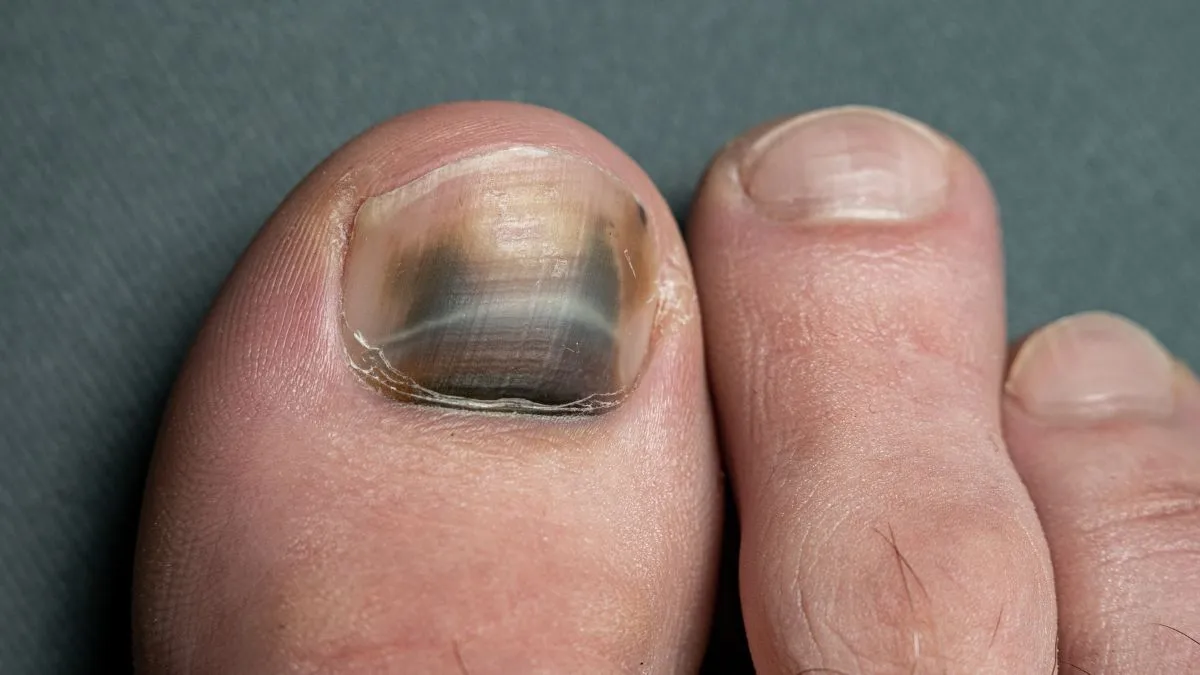Nail infections can be bothersome, painful, and, in some cases, lead to more severe health issues if left untreated. These infections affect the nails and the surrounding skin, and they can be caused by fungi, bacteria, or viruses. Understanding the causes, recognizing the symptoms, and knowing how to prevent and treat nail infections can help you maintain healthy nails and avoid complications.
What Are Nail Infections?
Nail infections are conditions that affect the nails and the surrounding skin. These infections can occur on the fingernails or toenails, and they may cause discomfort, swelling, discoloration, and even nail loss if left untreated. While some infections are mild and temporary, others can cause long-term damage or spread to other parts of the body.
Symptoms of Nail Infections
The symptoms of nail infections can vary depending on the cause and severity, but common signs include:
- Discoloration of the nail: The nail may become yellow, white, brown, or green, depending on the type of infection.
- Swelling and Redness: The skin around the nail may become red, swollen, and inflamed.
- Pain and Tenderness: The affected area may be painful or tender to the touch.
- Thickening or Crumbling Nails: Fungal infections often lead to nails becoming thickened, brittle, or crumbly.
- Pus or Fluid Drainage: In bacterial infections, you may notice pus or fluid draining from the infected area.
- Nail Separation: In severe cases, the nail may begin to separate from the nail bed.
Causes of Nail Infections
- Fungal Infections (Onychomycosis):
Fungal infections are the most common cause of nail infections, especially toenails. They occur when fungi enter the nail through small cuts or breaks in the skin. The fungi thrive in warm, moist environments, which is why toenails are more commonly affected due to the enclosed space of shoes and socks. - Bacterial Infections:
Bacterial infections can occur if there is a cut, injury, or damage to the skin around the nail. Common bacteria like Staphylococcus can enter through broken skin, leading to pain, swelling, and pus formation around the nail. - Viral Infections (Warts):
Warts caused by the human papillomavirus (HPV) can also lead to nail infections. These infections are more common in people who bite their nails or cuticles, creating openings for the virus. - Ingrown Nails:
An ingrown nail occurs when the edge of the nail grows into the surrounding skin, leading to inflammation, pain, and potential infection. This condition often affects the toenails, particularly the big toe.
Treatment for Nail Infections
The treatment for nail infections depends on the cause and severity of the infection:
Fungal Infections:
- Antifungal Medications: Oral antifungal medications such as terbinafine or itraconazole are commonly prescribed for fungal nail infections. Topical antifungal creams or lacquers may also be recommended for mild cases.
- Home Remedies: Some people find relief from home remedies such as tea tree oil, vinegar, or hydrogen peroxide. However, these should be used with caution and are not a substitute for medical treatment.
Bacterial Infections:
- Antibiotics: If the infection is bacterial, your doctor may prescribe oral or topical antibiotics to treat the infection and prevent it from spreading.
- Drainage of Abscesses: In some cases, if there is a collection of pus, your doctor may need to drain the abscess to allow for healing.
Viral Infections:
- Topical Treatments: Warts caused by HPV can be treated with topical treatments such as salicylic acid or cryotherapy (freezing the wart). In severe cases, a dermatologist may need to remove the wart surgically.
Ingrown Nails:
- Nail Care: If you have an ingrown nail, soaking the foot in warm water and keeping the area clean can help reduce inflammation. In some cases, your doctor may need to remove the ingrown part of the nail.
- Surgical Treatment: In severe cases, surgery may be needed to remove the affected nail portion.
Preventing Nail Infections
Preventing nail infections involves maintaining good nail hygiene and avoiding habits that increase your risk of infection. Here are some tips for preventing nail infections:
- Keep Nails Clean and Dry: Regularly clean your nails and dry them thoroughly after washing to prevent the growth of fungi and bacteria.
- Avoid Biting Your Nails or Picking at Cuticles: This can create openings for infections to enter.
- Wear Well-Fitting Shoes: Tight or poorly fitting shoes can cause ingrown nails and increase the risk of fungal infections.
- Trim Nails Properly: Cut nails straight across to prevent ingrown nails, and avoid cutting them too short.
- Use Antifungal Powder: If you are prone to fungal infections, consider using antifungal powders in your shoes and socks.
- Disinfect Nail Tools: If you do your own nails, make sure to disinfect your nail clippers and other tools regularly to avoid the spread of bacteria or fungi.
Why Choose Ray and Rio Speciality Clinic?
Dr. Annie Flora brings expertise and compassionate care to every patient. Here’s why she’s the right choice for your healthcare needs:
- Patient-Centered Care: Focused on personalized treatment plans tailored to each patient.
- Advanced Techniques: Utilizes the latest medical advancements for optimal outcomes.
- Compassionate Approach: Dedicated to providing support and comfort throughout your treatment journey.
- Trusted Reputation: Known for delivering exceptional care and positive results.
Choose Dr. Annie Flora for expert, caring, and comprehensive healthcare.

